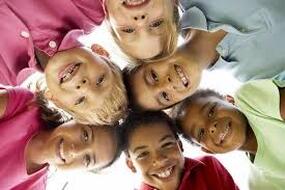 Hello everyone, welcome back to the BSNV blog. Coming at you today to discuss a few healthy and positive methods that can be used in the communications we have with kids about exercise and physical activity. This is a perfect subject for my Sweat the Small Stuff series , as it should be approached with small steps. This is not meant be an exhaustive list of topics to solve all unique situations. Kids respond to different methods according to their stage of development, genetics, and environment. But, I believe there are controllable attributes to this subject that are universal, yet tough to live out. Much of this goes against the grain. It is meant to be a healthy starting point and a reminder of a sound approach. Of course, this applies equally to those kids who naturally love to get out and be active as well as those who struggle with it 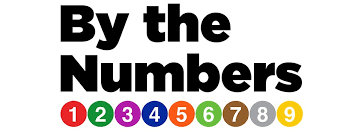 Childhood Obesity The stats on childhood health metrics are, unfortunately, getting worse with time. The rise in childhood obesity is a significant indicator of this, as this can lead to lifelong health complications, mental and physical.
But FIRST, an ANALOGY! If you have ever used any kind of tool around the house, you can relate to this. Open up the manual on all hand and power tools, and you would see under the warning label something to the effect of: "Use (tool) as recommended by the manufacturer. Do not apply excessive force or use any other tools to gain leverage. This will exert greater forces on the tool than it was designed for and is likely to cause breakage and possible injury". Essentially, hold the tool and set it up properly, and it will do most of the work on it's own. Hopefully you can see where I'm going with that- kids need an inviting environment where they can learn on their own all of the merits of exercise. Their reward system is vastly different than that of an adult, so we have to be creative with them  Discrete counter-productive communication Ironically, this advice about communication is more about what NOT to say around kids about YOURSELF or other adults regarding exercise. Parents have to tread carefully here about how exercise gets imprinted on kids. This can have pretty permanent effects, depending on the age, so let's get this out of the way first. Here are a few phrases, with huge impacts:
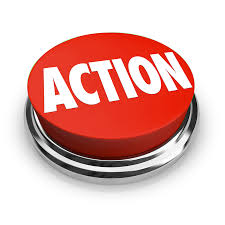 Regarding kids and exercise, TALK IS CHEAP! The single BEST way to talk to kids about exercise is to NOT talk to kids about exercise! What I mean by that is, telling a child or teen to exercise can easily go nowhere. It can be interpreted as a chore. In my opinion, We START with the DOING, and TALK later about all of the positive aspects of the experience. Coach them on experiences AS THEY HAPPEN, so they can relate instantly to the benefits. We want to teach them the importance and to build on educating them on things by calling how things make them FEEL, and help them shape their experience and build on all of the good feelings associated with what they accomplished. Here are some great ways we can impress upon them without saying a word Start SMALL Sweat the small stuff here. Like it is with adults, If you have a kid who struggles with something, you don't throw a huge regime change at them all at once. Set up and celebrate small accomplishments. Lead with experiences, and celebrate them and talk 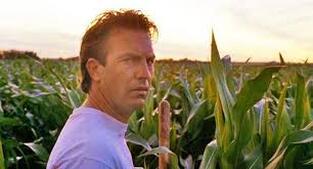 If you build it... Give them access to many different, fun, and active options! Trampolines are the epitome of this- they are FUN, and promote great exercise, while breeding basic athleticism, spacial awareness, and muscle strengthening. Basketball hoops, soccer goals, and always have a ball-bag stocked with the basics! Basketball, baseball and gloves, soccer ball, football, etc. And keep them inflated and ready to use. Make sure all barriers to use are minimized. 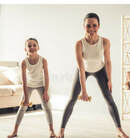 Be a model The BEST thing to do is model your behavior. Kids notice what you do, and will often follow doing something simply because you are doing it. If it's a part of your life, it will most likely become an important part of theirs. Make open play outside fun - get creative and be a part of it! It's not enough to just say "go outside and play". We can do better than that. Get out there with them 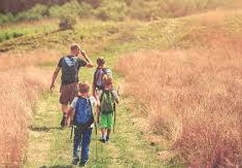 Hit the trails and explore! Make hikes and trail rides a regular thing, away from the house. Make completion of the hike an accomplishment, and comment on how good it makes you feel. If kids don't respond to sports as a means of physical activity, then chances are good they will take to nature. Its an opportunity to coach certain aspects about exercise: it can be tough, but it's important to finish, and they should feel rewarded for finishing the hike. That is how they should learn about exercise - by DOING first, and circling back and talking about it later. Emphasize how happy the body is after exercise, and all of the good effects. We all know it can be difficult to get kids to buy into things they don't enjoy. It is up to parents to communicate by DOING and SHOWING, and TALKING later. With proper setup, kids are much more likely to make exercise and physical activity an important part of their life
Until next time!
1 Comment
Leave a Reply. |
Broad Scope Narrow Focus BlogWelcome to the Broad Scope Narrow Focus Blog! I hope you find a lot of useful and applicable information as we explore the broad world of Wellness together. Check in often, as there will be new posts weekly! Enjoy Archives
September 2021
Categories |
Services |
Hours & Contact InformationHours of Operation: The Facility is staffed Tuesday - Thursday 7a-5p
*Facility is accessible 24 hrs / 7 days a week e . [email protected] p . (616) 787 - 7710 |

 RSS Feed
RSS Feed